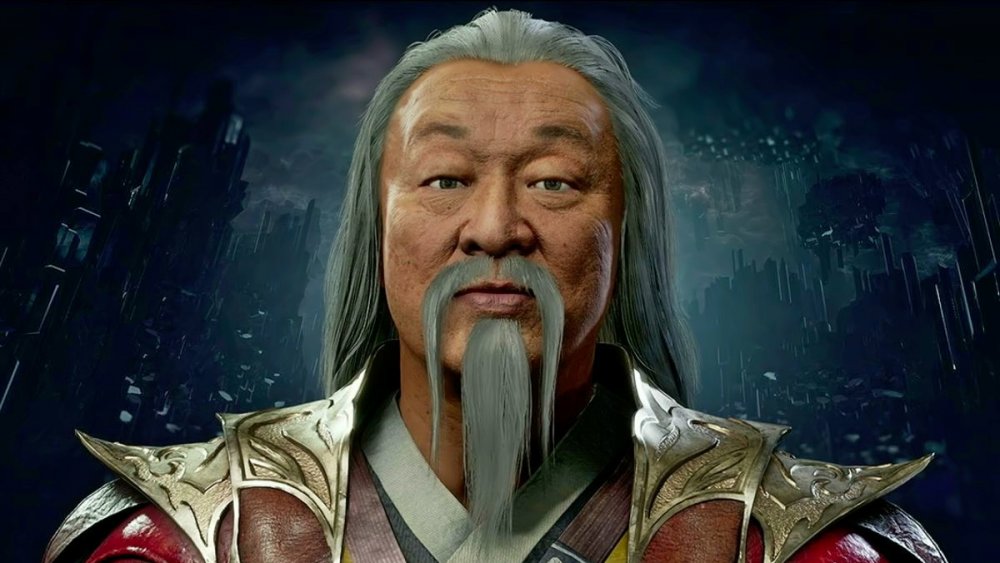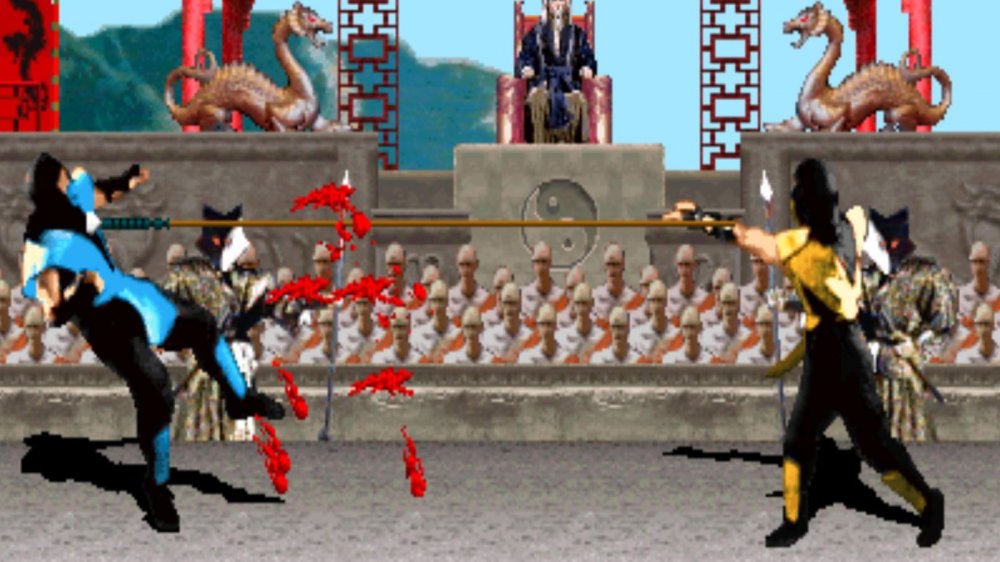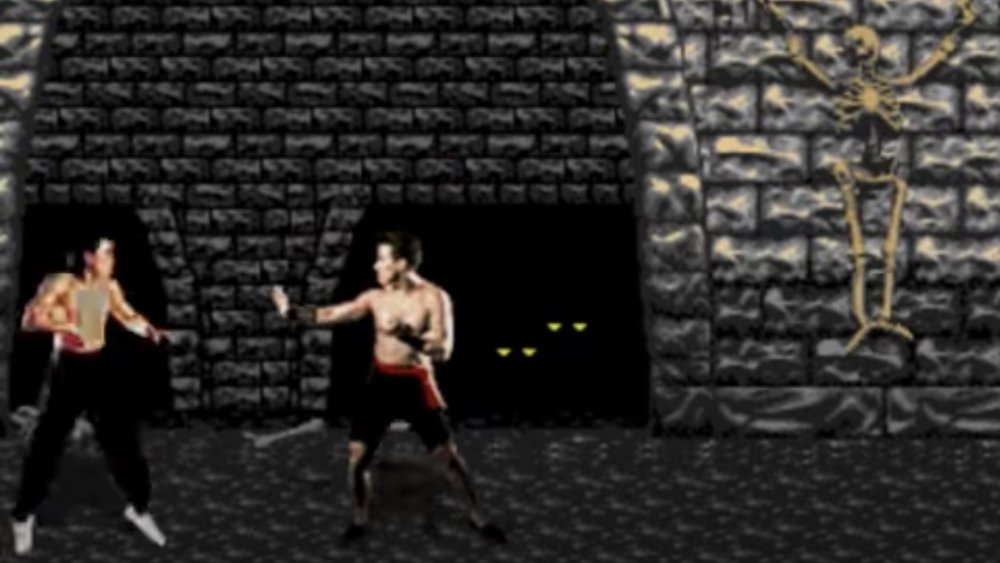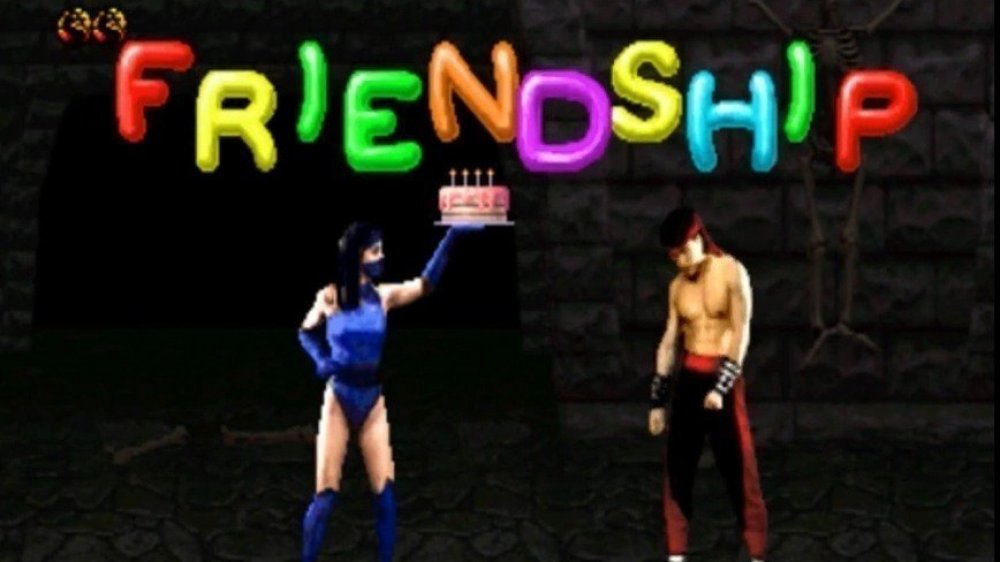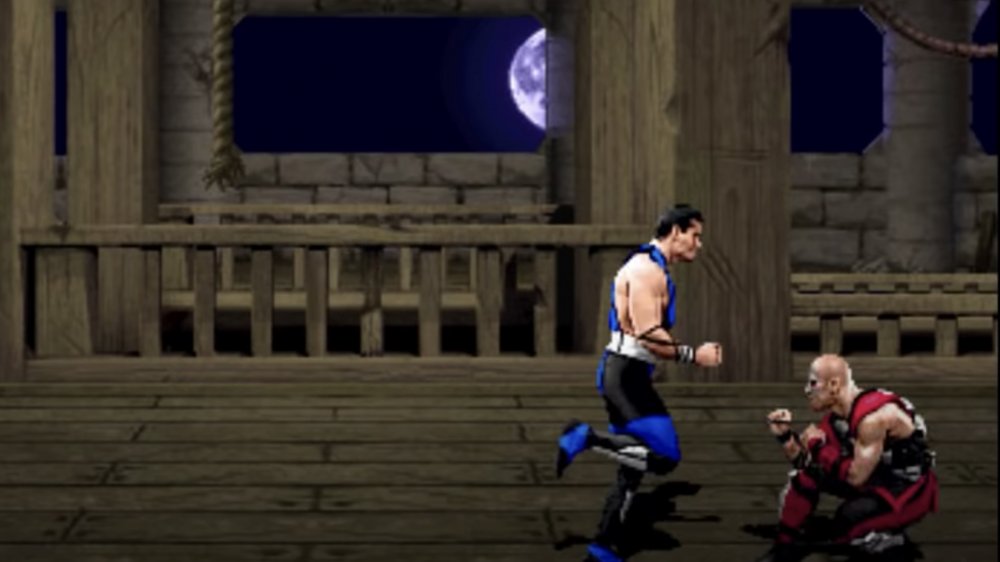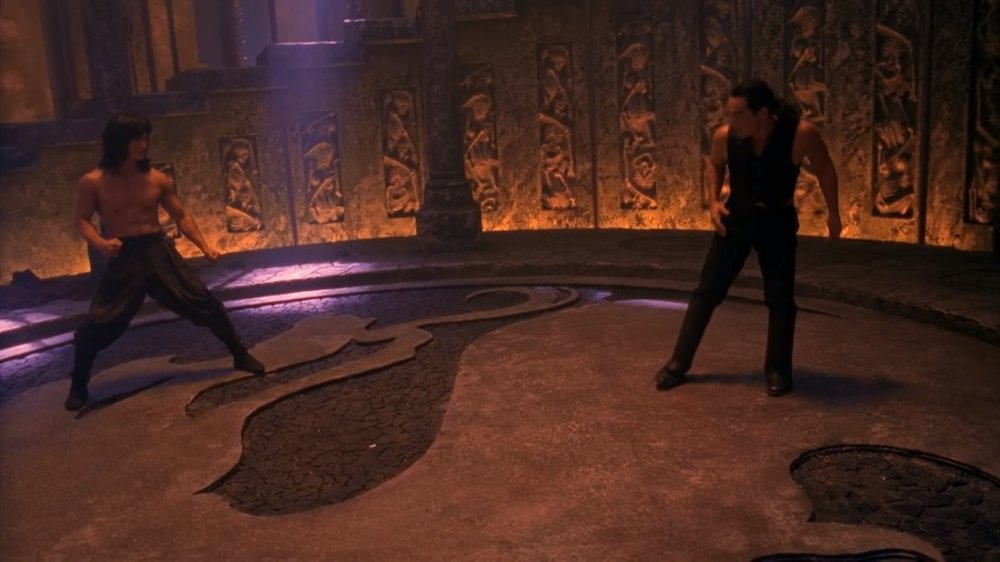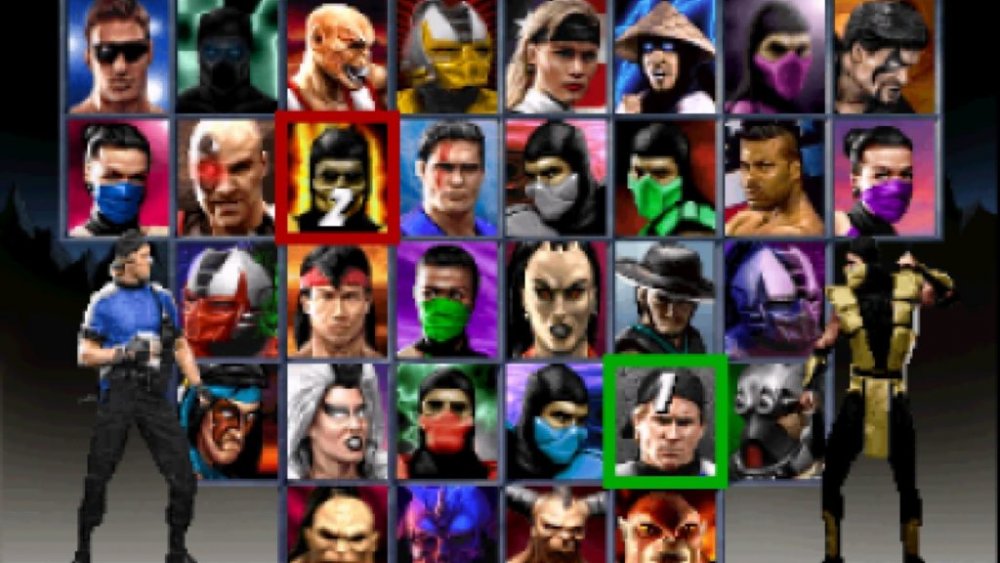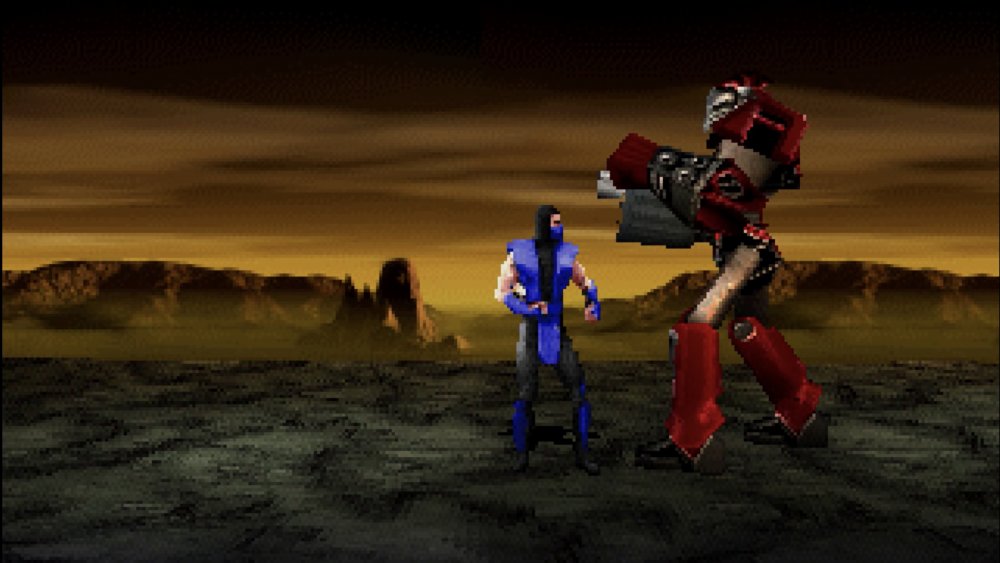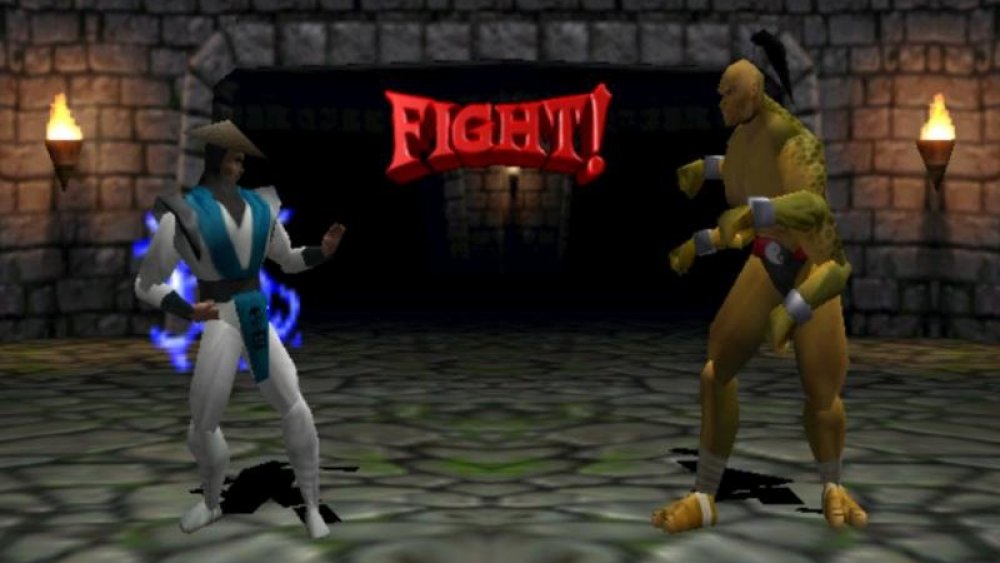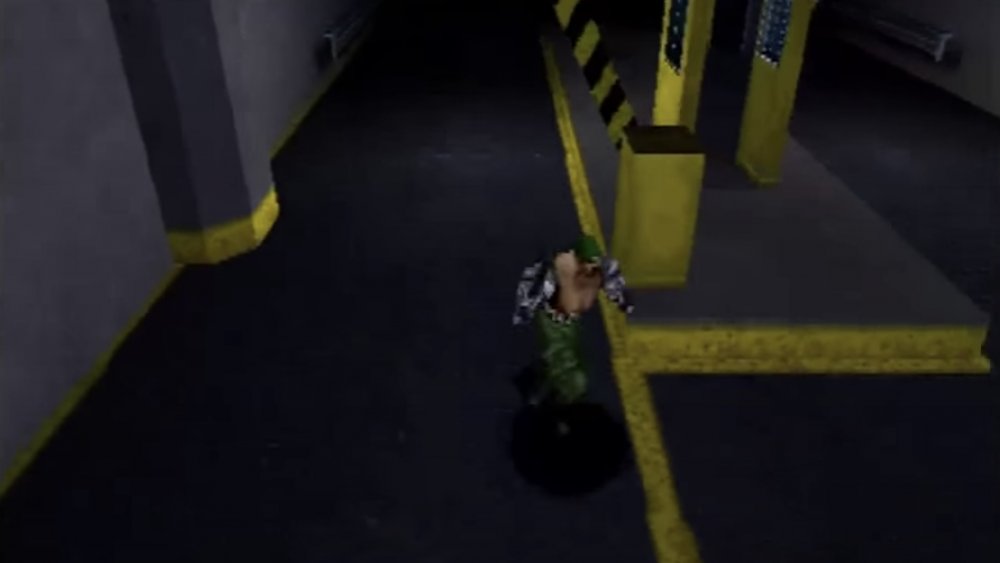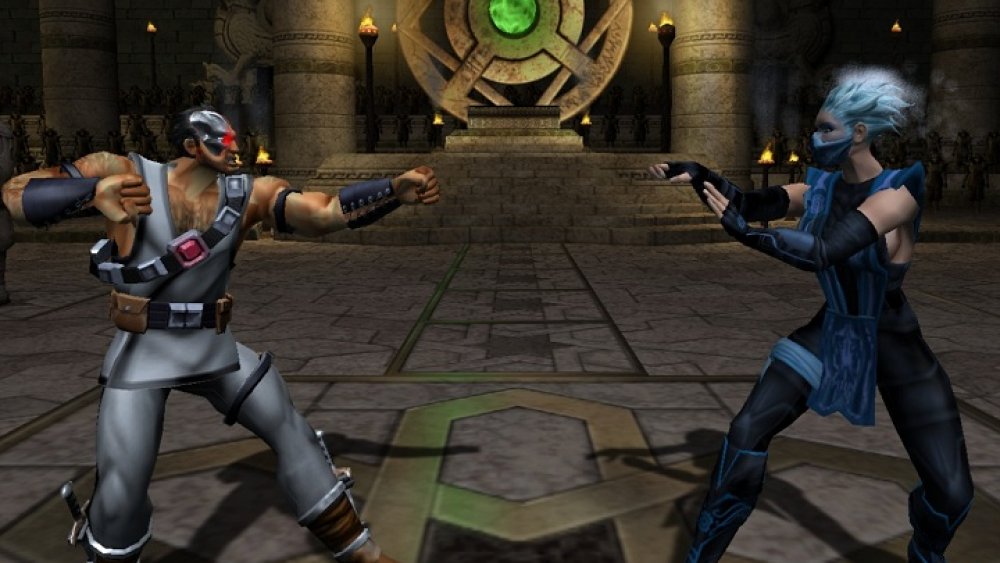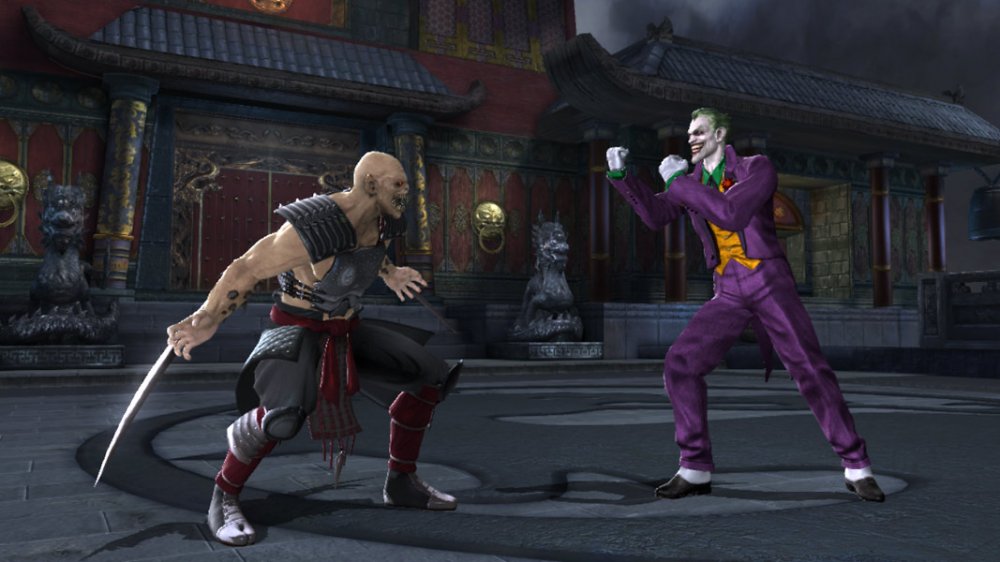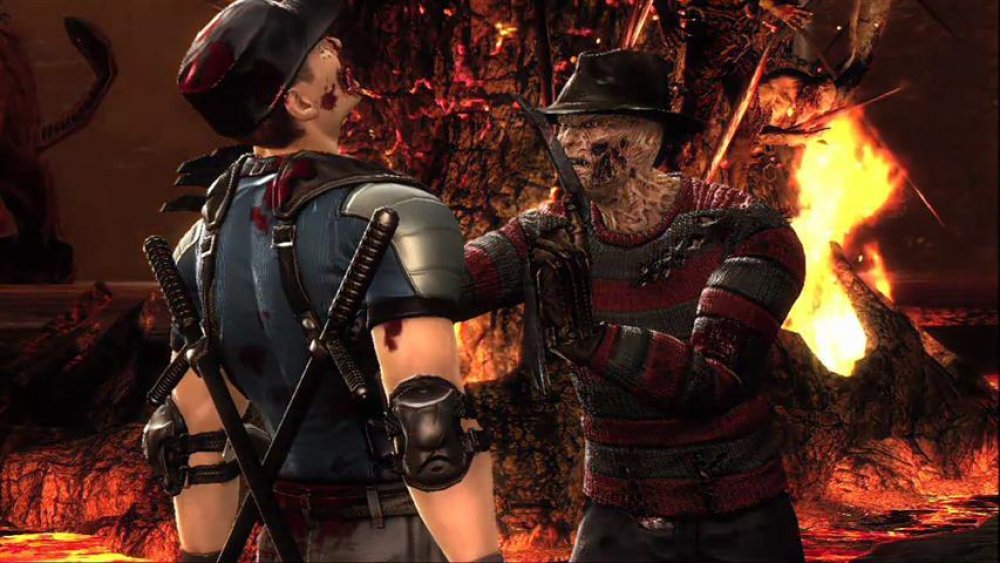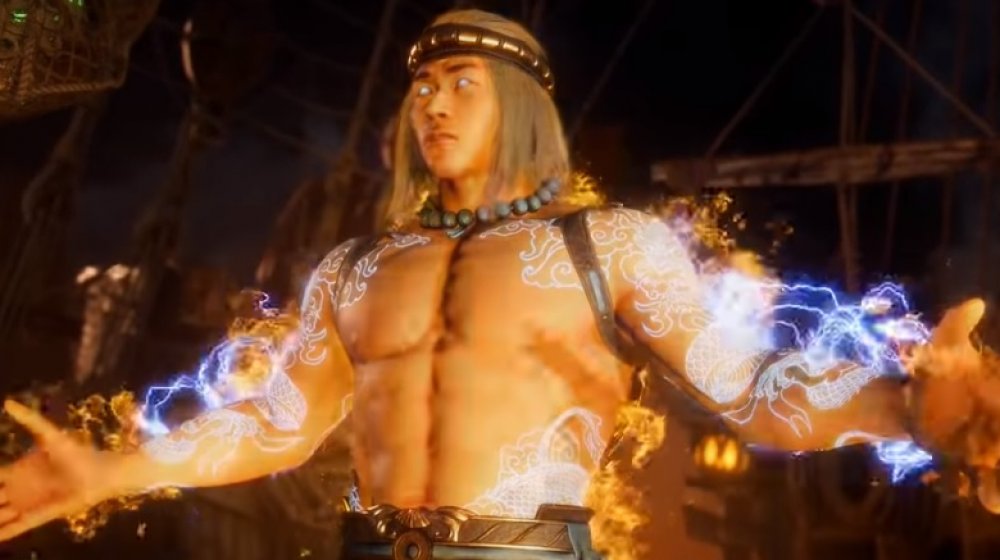The Stunning Transformation Of Mortal Kombat
Mortal Kombat has proven a champion of the fighting franchises. Its success, rivaled by few in the genre, took creator Ed Boon by surprise. He would have never guessed a project that grew from a rejected Jean-Claude Van Damme game would still be around almost 30 years later. In the challenging landscape of the video game industry, few franchises have remained relevant as long as Mortal Kombat. So, what is the secret?
During an interview with Esquire, Boon credited the ability to adapt as the true secret to Mortal Kombat's long-standing success. "One of the reasons why we think we've managed to stick around for so long is not only are we not afraid to change up our formula, change features and what not, but we strive for that," he said. "We strive to make the next game be different than the previous one." This continued growth has kept the series dynamic. Through all the ups and downs, Mortal Kombat has evolved into something quite special. It has grown up with its fans, bringing something new with every installment.
This is the stunning transformation of Mortal Kombat.
Mortal Kombat hits the arcades
The year was 1992. Street Fighter 2 had already revolutionized the fighting genre, and no other fighter had achieved such a level of success. Then a new challenger entered the arena.
The seed of Mortal Kombat came from John Tobias' interest in exploring the possibilities of digitized actors in gaming. He wanted to feature large sprites to showcase how impressive the technology was, and believed that a fighter was perfect for such an objective. With the help of Ed Boon, Daniel Pesina, Carlos Pesina, and Richard Divizio, they recorded some moves to pitch the idea to Midway. The studio heads were hesitant about their original concept but interested in using the technology for a game featuring Jean-Claude Van Damme. Such a partnership did not come to fruition.
Following the success of Street Fighter 2 in 1991, Midway revisited Tobias' fighting game. With an eight-month deadline and tons of backstory and development already complete, the team moved forward on what would later become Mortal Kombat. The demographic of arcades in the early '90s had shifted to older gamers. As such, the team decided to target a more mature audience. Gradually, the game evolved into a violent bloodbath with realistic graphics and savage Fatalities.
Bringing controversy to a living room near you
After debuting in arcades, Mortal Kombat proved a formidable contender in the fighting arena. So much so, in fact, it was ready to make the next major jump in the series' evolution: the small screen.
Mortal Kombat received console ports in 1993, and with them came a whole lot of controversy. Because the arcade scene was mainly occupied by an older crowd, the game managed to bring buckets of blood and carnage without causing much alarm. But in its transition to home consoles, Mortal Kombat landed in the hands of younger gamers, which caused such a stir the video game industry had to create its own ratings board in response to all the concerns from parents and Congress.
Though porting the title led to massive amounts of conflict, it proved an important moment in the Mortal Kombat timeline. Aside from the fact that this "bad press" likely helped Mortal Kombat's popularity, the move to home consoles gave the franchise legs in a new market early on. As arcades gradually became less prominent, Mortal Kombat's foothold in console gaming allowed the series to continue flourishing decades later.
Making friends
Why can't they just all get along?
Since it first launched, Mortal Kombat made its mark as an unforgivably gruesome, graphic fighting game. It's what set the arcade fighter apart from Street Fighter 2 and what kept the quarters rolling in. And Fatalities — the signature finishers that were initially secret, but spread through word of mouth — fed gamers' urges for satisfying ways to literally add insult to injury to their fallen challengers. So much blood and gore, such glorification of mutilating digitized fighters, was bound to draw the wrong kind of attention. But did the makers of Mortal Kombat back off? Not at all.
Mortal Kombat 2 launched in 1993, and with it, the developers had to come up with ways to outdo their previous efforts. Of course, Fatalities made a return, but in response to the controversy, they also added Friendships. This marked the first in a series of "-alities" that would later include "babalities," "animalities," and "brutalities." These were humorous, lighthearted, and friendly ways to send off your challenger without drawing a single drop of blood. Some examples include the Johnny Cage autograph (as seen in the Mortal Kombat film), Kidd Thunder, and a groovy, dancing Liu Kang.
Brand new mechanics
When Mortal Kombat 3 came out in 1995, it rounded out the first of three trilogies. And since the other two games already pushed the envelope in a number of ways, the developers set out to take the franchise to another level with the third installment. Capitalizing on the secretive nature of the series so far, Mortal Kombat 3 packed in hidden content and even more "-alities" to go along with Fatalities and Friendships. But what would a new game be without fresh mechanics?
Indeed, perhaps the most significant way Mortal Kombat 3 contributed to the franchise was in updating the gameplay mechanics. For the first time, combatants could run, bringing a faster pace to the action. But even more importantly, the developers implemented a combo system that would later become a signature of the series. Although the combos were rather simple back then, players would see much greater complexity in button combinations as the games progressed, which would unleash a string of even flashier moves. This system would help Mortal Kombat set itself apart from other fighters as the franchise moved away from two-dimensional, digitized graphics to fully-rendered 3D characters.
Making the jump to TV and movies
In an interview with Esquire, Ed Boon told the outlet, "I think when they make a movie out of a video game, that's always a sign that this is expanding past just the video game industry to overall entertainment or pop culture." Indeed, when Mortal Kombat made a leap to theaters in 1995, there was no denying that this was more than just a passing fad.
The first Mortal Kombat film proved to be a success and is often cited as one of the all-time best video game movies. This adaptation is also famous for creating the "Techno Syndrome" theme, which IGN's Jesse Schedeen called "the most iconic video game music this side of the Super Mario Bros. theme."
The movie opened the door to numerous adaptations, though not all would be successful. The following year, Mortal Kombat: Defenders of the Realm came out. Considering it was a show for kids, this cartoon was doomed from the start. In 1997, the first movie received a sequel — Mortal Kombat Annihilation. It was a terrible flick that made a mockery of its predecessor. Other shows and movies that followed were Mortal Kombat: Conquest, Mortal Kombat: Rebirth, Mortal Kombat: Legacy, and Mortal Kombat Legends: Scorpion's Revenge.
The whole gang's here, at last
When playing the first three Mortal Kombat games, you will likely miss some characters. Revisiting the first installment, its seven fighter lineup pales in comparison to the other two. If you play the sequel, you can't select Kano or Sonya. They both return in Mortal Kombat 3, but now where's Raiden, Scorpion, Reptile, Mileena, Kitana, Johnny Cage, and Baraka? If you love the first three Mortal Kombat games, then you're in luck.
1996 was the first year every fighter released up to that point came together in one package. Mortal Kombat Trilogy gave fans the largest roster at the time — in a way, marking the end of an era. While it was not the final game in the series to feature digitized actors, it was the last of the traditional MK fighters before the franchise stepped into the third dimension.
GameSpot's Jeff Gerstmann described Mortal Kombat Trilogy as "the last gasp of this 2D game." And what a sendoff it was! Not only did it unite everyone from the first three titles, but it also gave some fighters alternate appearances, offered a robust selection of stages, and included several fighting modes like tournament and two-on-two matches.
Adding some mythology to the mix
If there is one thing Mortal Kombat is known for aside from its gratuitous violence, it's deep lore. Even from the beginning, an intricate backstory tied all the characters together. Because of the arcade format, however, it was nigh impossible to integrate this information into the gameplay. In 1997, Mortal Kombat Mythologies: Sub Zero changed that.
A console exclusive, Mortal Kombat Mythologies tells the story of Sub-Zero (the original, not the brother who filled the role after his death) and his dealings with Quan Chi. Taking place chronologically before the first Mortal Kombat, Sub-Zero encounters other staple characters like Raiden and Shang Tsung. In the end, Shang Tsung recruits him to join the tournament that takes place in 1992's Mortal Kombat.
Retronauts' Stuart Gipp called Mortal Kombat Mythologies a "garbage fire," however, he noted the importance of the title for creating a narrative-driven fighting model that would be refined later in the series. Unfortunately, while this game was a commendable effort to tie in the deep lore, it failed tremendously in execution. IGN gave Mortal Kombat Mythologies: Sub Zero a pitiful 3.5 out of 10.
A rocky transition from 2D to 3D
In the late '90s, video games were transitioning from 2D to 3D. It was a rough time for many franchises, and for a series known for its digitized graphics, such a change was especially uncertain. Naturally, technology was evolving, and Mortal Kombat would eventually have to step into the third dimension. So, in 1997, Mortal Kombat 4 made history as the first 3D game in the series.
Mortal Kombat 4 arrived during a lower point in the franchise. It followed the failure that was Mortal Kombat Mythologies: Sub Zero, and released only a few years before a 3D misstep known as Special Forces. The game was generally well-received, with a rating of 8.9 from GameSpot's Jeff Gerstmann and an average user rating of 7.9. Still, one cannot ignore the fact that leaving its roots in 2D digitized graphics was bound to be less than perfect. Jim Hargreaves of Bloody Disgusting called Mortal Kombat 4 a "clumsy transition into 3D."
The Mortal Kombat series lost a lot of the charm and gruesomeness when it moved away from using digitized actors. It would take many years to master the 3D fighting format, but eventually the developers got it right.
An evolved single-player experience
Released in 2000, Mortal Kombat: Special Forces was a disastrous effort to expand beyond the fighting formula of Mortal Kombat games. What could be the worst entry in the series, Special Forces attempted to follow the lead of Mortal Kombat Mythologies: Sub Zero by delivering a narrative-driven experience. Unfortunately, where Mythologies at least offered a somewhat compelling story, Special Forces failed in that department. IGN's Marc Nix actually enjoyed Special Forces at first but was so disappointed by the overall presentation that his score dropped to a measly 3 out of 10. If this game was such a disaster, how could it possibly have played any significant role in the Mortal Kombat timeline?
As bad as it may have been, Mortal Kombat: Special Forces awakened the creators to the possibilities of an immersive single-player mode. For the first time, players were able to control a character from the series in a fully 3D environment. This wasn't just another fighter, but a title with gameplay Nix compared to Metal Gear Solid. Such a break from the formula allowed the Mortal Kombat team to explore how the titles could be more than just fighting games. Later single-player experiences would evolve into something much better.
The next trilogy
Logic would dictate that the next trilogy would begin with Mortal Kombat 4, but the three that are often grouped together begin with the fifth Mortal Kombat. As Nathan Coe of Fiction Talk explained, Mortal Kombat: Deadly Alliance, Deception, and Armageddon all came out during the sixth console generation and marked the beginning of a new focus on consoles versus arcades. But it wasn't just the shift to consoles that made 2002's Deadly Alliance notable.
The fifth Mortal Kombat introduced an entirely revamped combat system where each fighter possessed three unique styles of martial arts. Combos reached a new level of complexity not seen before. Fighters finally had a full three-dimensional range within the arenas, creating a completely different combat experience.
Expanding on the single-player ideas presented in Special Forces, Deadly Alliance introduced a Konquest mode that offered players a unique way to play the game solo. It was also the first appearance of The Krypt, which became a staple of all Mortal Kombat titles that followed. Through the Krypt, fans of the series were finally able to gain behind-the-scenes insight via in-game unlockables, expanding the lore and presentation even further. Without a doubt, Deadly Alliance marked a major transition in the series.
Mortal Kombat meets the DC Universe
Street Fighter, Mortal Kombat's greatest rival, is well known for its crossover with the Marvel universe. It was only a matter of time before Mortal Kombat got its very own crossover, and that day came in 2008 when Mortal Kombat vs. DC Universe released. The game was a disappointment to many fans, mostly due to its dialed-back violence and the notable absence of gory Fatalities. But where it failed to impress the fans, it succeeded in bringing a key feature to the series.
With Mortal Kombat vs. DC Universe, the developers were finally able to nail the tricky subject of an effective story mode in a fighting game. According to IGN, Ed Boon's idea was met with resistance but ultimately proved successful. Creating a cinematic, four-hour movie broken up by gameplay, this installment paved the way for future Mortal Kombat titles. The following trilogy would make its mark by integrating this style of storytelling, which would help define the series from that point forward. As the games moved further away from their digitized roots, establishing a new hook would prove even more important to the continued success of the franchise.
Changing publishers
Sometimes a seemingly unfortunate set of circumstances can lead to new beginnings. Mortal Kombat struggled to re-establish itself after moving to 3D. When Midway shut down in 2009, things looked even more uncertain. But after Warner Bros. purchased the rights to the franchise, Mortal Kombat gained an opportunity to rise anew through the formation of NetherRealm Studios.
Two years later, the new studio re-launched the series with Mortal Kombat 9, kicking off a fresh trilogy of games revolving around Raiden's attempts to alter the timeline. This brought fans back to the beginning of the series with an elaborate cinematic story mode that retold events of the first three games. IGN's Jarrett Green speculated that, with this new single-player experience, Mortal Kombat was leading the way once again. Green credited the story mode for pulling in casual fans.
As NetherRealm Studios revamped the franchise, it also ushered in a new era of guest fighters. For the first time, characters from other properties who had no other connection to the title were brought in to face off against classic MK champions. Guest fighters have included Kratos, Freddy Krueger, Jason Voorhees, and The Terminator.
Starting over
For a franchise with lore that's been constantly evolving for nearly 30 years, sometimes you reach a point where you have to start over from the beginning. If you have not yet played 2019's Mortal Kombat 11, you may want to avoid possible spoilers that follow.
In the most recent trilogy, Raiden's meddling with the timeline catches the attention of Kronika, master of time. The gang teams up to fight against Kronika and her allies to secure Earthrealm's freedom. Toward the end, Raiden merges with Liu Kang, turning him into the God of Thunder and Fire. In the final battle, when Lord Liu Kang is victorious, he is left with the task of reshaping the timeline. It's a hard reset that opens up endless possibilities for the future of the series.
It would seem the original Mortal Kombat storyline has gone as far as it could, and this turn of events might mark the end of this particular mythology. In an interview with GameSpot, Ed Boon confirmed that in his head "Liu Kang's journey" is finished at this point in the series. Who knows what the future holds for the Mortal Kombat franchise?

